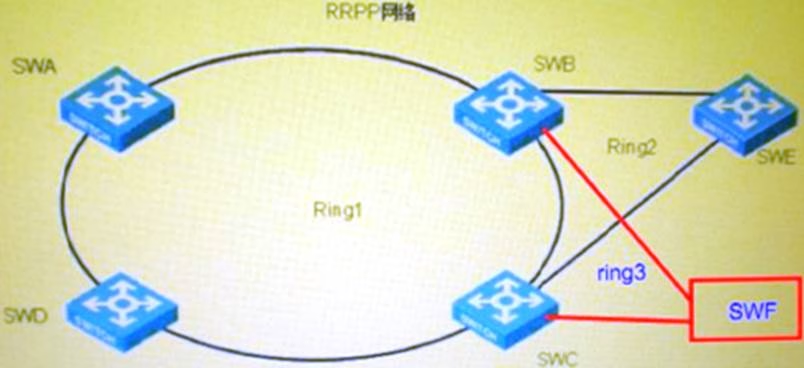The figure shows the networking application of RRPP. The switches SWA, SWB, SWC, and SWD in the customer LAN form the main ring 1 of the RRPP ring. The switches SWB, SWC, and SWE form the sub-ring 2. The switches SWB, SWC, and sWF form the sub-ring 3. If the switch SWE is the master node of the sub-ring 2 and SWF is the master node of the sub-ring 3, What can we learn from the above information?
The figure shows the networking application of RRPP. The switches SWA, SWB, SWC, and SWD in the customer LAN form the main ring 1 of the RRPP ring. The switches SWB, SWC, and SWE form the sub-ring 2. The switches SWB, SWC, and sWF form the sub-ring 3. If the switch SWE is the master node of the sub-ring 2 and SWF is the master node of the sub-ring 3, What can we learn from the above information?

A . It is not possible to add sub-ring 2 and sub-ring 3 to the same ring group.
B . If sub-ring 2 and sub-ring 3 are added to the same ring group, the edge nodes and auxiliary edge nodes of sub-ring 2 and sub-ring 3 in the ring group can be different
C . If sub-ring 2 and sub-ring 3 are added to the same ring group, the ring groups should be configured on the switches SWB, SWC, SWE, and SWF respectively and the configurations should be consistent.
D . If sub-ring 2 and sub-ring 3 are added to the same ring group, the primary ring links corresponding to the edge nodes and auxiliary edge nodes of sub-ring 2 and sub-ring 3 in the ring group should be consistent.
Answer: D
Latest GB0-372-ENU Dumps Valid Version with 432 Q&As
Latest And Valid Q&A | Instant Download | Once Fail, Full Refund

